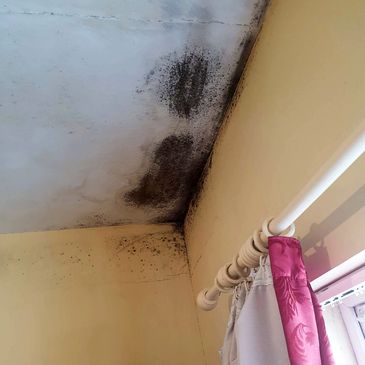DO YOU HAVE A MOULD, damp, condensation?

Condensation
Condensation
Condensation
When moisture in the air comes into contact with a colder surface, like a wall or window, tiny droplets of water to appear, which is more commonly referred to as condensation. Condensation can also appear in areas such as behind bedroom furniture and inside wardrobes which can start to create a musty smell and lead to mould growth on clothes, furniture and walls

Damp
Condensation
Condensation
There are three main causes of damp problems within the home, all of which can be prevented and remedied through careful planning. The most common cause of damp problems in the home is condensation dampness which is caused by elevated humidity levels and moisture in the air.

Mould
Condensation
Mould
Evidence suggests that mould can severely affect your health. It can cause headaches, breathing difficulties, nausea and fatigue. Mould is also a recognised allergen and irritant, and can trigger for more serious health problems such as respiratory problems and asthma.
Five Top Reasons Why Your Home Needs Good Ventilation
Five Top Reasons Why Your Home Needs Good Ventilation
Five Top Reasons Why Your Home Needs Good Ventilation
1. To remove condensation which causes damage to the home.
2. To make a healthier living environment and reduce asthma.
3. To help alleviate symptoms of hay-fever. 4. To reduce the effects of naturally-occurring Radon gas.
5. To lessen the impact of VOCs.
Health
Five Top Reasons Why Your Home Needs Good Ventilation
Five Top Reasons Why Your Home Needs Good Ventilation
Most people don't associate health problems with the air in their homes, yet there are as many as 900 toxins polluting our indoor air. Certain indoor sources such as pet dander and secondhand smoke have very negative health effects and can lead to serious health issues, such as asthma.
Dust Mites
Five Top Reasons Why Your Home Needs Good Ventilation
Dust Mites
Dust mites thrive in humid conditions, as their only source of water is from the air. This means that if there are high levels of relative humidity in a home this is the perfect breeding ground for dust mite populations. The higher the humidity, the quicker they will breed.
Mildew
Radon Gas
Dust Mites
Mildew is a form of fungus that can grow on cool, moist, or poorly ventilated surfaces in your home. It is most commonly seen behind furniture on exterior walls, but it can also grow in cabinets and on furniture. Moulds and mildew are not the same thing, although they do grow in similar conditions, and often indicate that there is an underlying problem with damp or condensation.
Moisture
Radon Gas
Radon Gas
Moisture in your home isn't unnatural, in fact did you know for example, 4 people living in a 3 bedroom property would create 112 pints of moisture a week from just breathing, cooking, showering and boiling the kettle. However if your home is airtight there is nowhere for this moisture to escape and that is where the problems arise.
Radon Gas
Radon Gas
Radon Gas
We are all aware of the dangers of carbon monoxide and protect ourselves using detectors. However, there is actually another invisible indoor air pollutant, in the form of Radon gas. Radon gas is a naturally occurring radioactive gas, which can enter your home from the ground, exposing you to doses of radiation. According to the National Radiological Protection Board (NRPB), health studies from around the world have linked exposure to Radon to the increased risk of lung cancer.